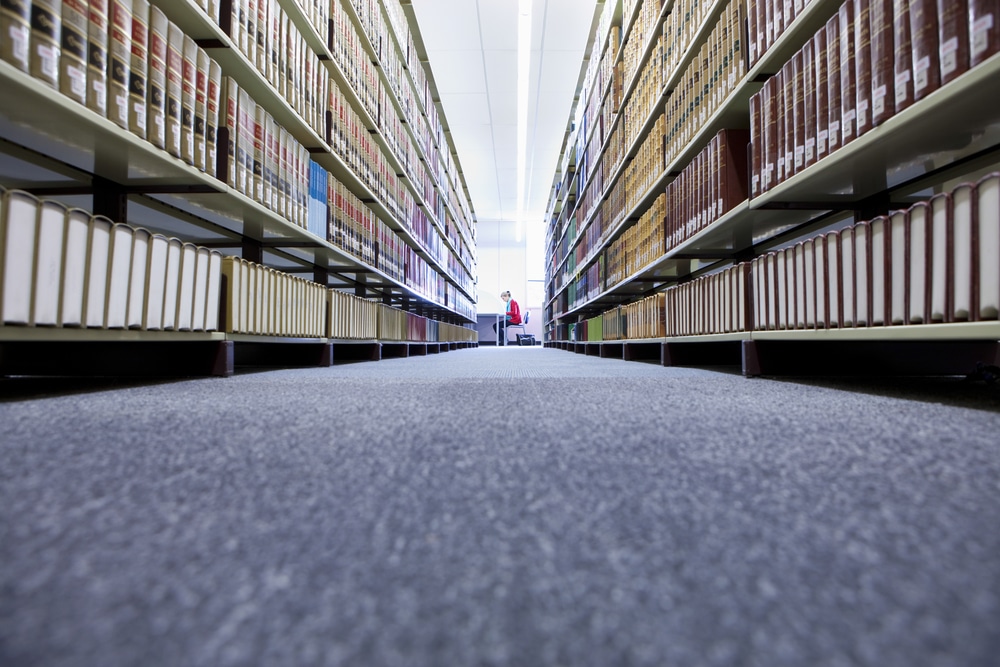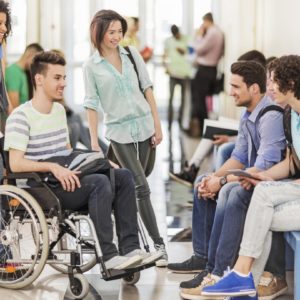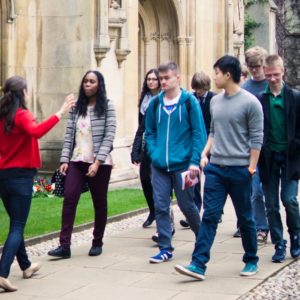On the 22nd July 2020, the Department of Education and Skills published a Guidance for Further and Higher Education for returning to on-site activity in 2020: Roadmap and COVID-19 Adaptation Framework.
As Ireland moves out of the initial response to COVID-19 towards a gradual return to on-site activity, institutions, providers, staff and learners across further and higher education (1) continue to demonstrate the commitment, adaptability and resilience which has delivered a preservation of learning throughout the crisis.
Informed by the Roadmap for Reopening Society and Business, the HSA Return to Work Protocols and ongoing public health advice there will be a gradual return to on-site education and training over the coming period in parallel with a gradual lifting of restrictions on research and development activity.
Placing the needs of their students and learners (2) at the centre, institutions and providers, and their research, teaching, service and support staff have responded strongly and continue to adapt in response to COVID-19. Diversity and autonomy have created the conditions for the resilience of further and higher education in the face of COVID-19, providing for flexible local responsiveness. Each institution and provider is developing detailed planning and contingencies for recommencing on-site provision and communicating these to students and learners.
Further and higher education provision has continued throughout the COVID 19 crisis. There is a strong history of resilience and innovation within and across further and higher education and this capacity, coupled with financial and other supports, will be fully leveraged to deliver a rounded student and learner experience for the coming year.
Roadmap and COVID-19 Adaptation Framework
To complement and underpin this work the COVID-19 Adaptation Framework provides a shared structure for Government, sectors, institutions and providers to use in preparing their plans, continuing to adapt in response to changes in public health advice and ensuring that consistently high-quality standards can be achieved in an inclusive way. Changes to public health advice that are likely to be made throughout 2020/21 will change and shape the learning experience in further and higher education and the framework has been developed in a way that eases accommodation of these changes for the sector.
The Further and Higher Education Roadmap and COVID-19 Adaptation Framework provides information about what can be expected from the learning experience based on the information available to date for programmes that will continue throughout summer 2020 and for the 2020/21 academic year.
The diversity of provision in further and higher education means that situation specific responses within the overall roadmap are necessary. Detailed information is available to students and learners directly from their institutions and providers and will be frequently updated. More detailed practical information in relation to health guidelines for further and higher education is set out in the accompanying Guidance for Further and Higher Education for Returning to On-site Activity in 2020 which will be updated on a regular basis.
Context
Following the announcement of the closure of all educational facilities from 12 March, further and higher education responded quickly and comprehensively in the face of unprecedented challenge, implementing a number of swift and positive actions in order to ensure the continuity of provision of further and higher education and to ensure that adequate supports were in place for students, learners and staff. This continuity was achieved in an emergency context with significant additional effort from research, teaching, service and support staff, also working remotely, to ensure that students and learners could progress, complete, and graduate from programmes.
Though further and higher education is made up of a diverse range of programmes, learners and trainees – Government, stakeholders, sectors, institutions and providers are all working together to ensure continuity of high-quality provision, protecting the health and wellbeing of everyone involved.
The department established a Tertiary Education COVID-19 structure of working groups, coordinating groups and a steering group to manage and progress the work that had begun to take place across further and higher education, and this structure continues to operate to identify and manage challenges and solutions at a national level to complement the work taking place at institutional and provider levels.
Diversity and autonomy have created the conditions for resilience of further and higher education in the face of COVID-19, providing for flexible local responsiveness. March 2020 saw an immediate shift to remote working for the majority of management and staff. Over the space of a few weeks teaching and learning moved to emergency remote learning.
Programmes with a high proportion of practical learning and assessment presented a particular challenge as some of these could not be completed through emergency remote learning. The Department of Further and Higher Education, Research, Innovation and Science is working with the relevant stakeholders, taking into account public health advice, to address this issue and ensure that students and learners can complete their programmes and progress within and from further and higher education.
Planning is also taking place against a backdrop of a rapidly evolving public health environment and a challenging labour market. Maintaining the diversity and continuity of provision across further and higher education is a priority: public health considerations will impact on the numbers of students and learners on-site at any time, particularly impacting on practical subjects. The provision of work-based learning may be challenging in certain highly impacted sectors.
In addition to supporting students and learners arising from planned provision, the sector will support skills provision to support those displaced or impacted by the crisis. This will be achieved through a range of schemes including: a new initiative developed by SOLAS to shape the delivery of education and training for jobseekers; through the expansion of Springboard+; through the rollout of the Human Capital Initiative (HCI) in higher education; and through a set of targeted interventions from Skillnet Ireland. Engagement with enterprise on identified skills needs will be a key element of these initiatives.
A return to the way of things before the global pandemic will not be possible in September 2020 and many features of the usual learning experience that are familiar and well understood across further and higher education will remain disrupted. At the same time institutions and providers are learning from their experiences, including safeguarding the community and social aspects of the student and learner experience.
To deliver learning throughout the remainder of 2020 and into 2021, institutions and providers will need to balance the needs of their students, learners, and staff against available facilities in the context of the changing phases of the government’s Roadmap for Reopening Society and Business and any additional subsequent changes. Continued support from Quality and Qualifications Ireland (QQI), awarding bodies and professional bodies (for regulated professions) will be required to ensure that this new environment continues to deliver high quality further and higher education into the future.
Physical distancing is not about keeping people apart, it is about keeping people at a safe distance in order that they might work together and optimum on-site delivery remains a priority for all institutions and providers. It is likely that some measure of ongoing physical distancing in accordance with public health advice will be required and a full return to comprehensive on-site delivery, such as existed prior to the crisis, is unlikely in the short to medium term. This is particularly challenging for highly practical programmes such as apprenticeship or research trainees who will be unable to complete their learning in the absence of infrastructure and materials that are only available on-site or in restricted areas, for example hospitals, schools, nursing homes, and so on, or for those who need to participate in work placements as part of their programme.
The balance between face to face and online learning will vary across programmes and will depend on factors such as the teaching and learning needs of various disciplines, the size of student and learner groups and the practical/theoretical balance of learning outcomes of various programmes. The provision of programmes with highly practical elements will remain challenging.
Clear and specific information, provided in a timely way, is the best way to support informed decision making by students and learners to prepare for taking up their further and higher educational opportunities.
Roadmap and COVID-19 Adaptation Framework
The Further and Higher Education Roadmap provides an overview of the phased return of further and higher education. The phases in the roadmap are derived from the Roadmap for Reopening Society and Business. While learning and assessment has continued through emergency remote learning for many, and research trainees began their onsite return on Phase 1, the academic year for most students and learners will commence in Phase 4. All of further and higher education is planning, using public health advice as a guide, to maximise the provision of learning onsite and the resumption of normal schedules.
The phases in the Further and Higher Education Roadmap are set out below aligned to the Roadmap for Reopening Society and Business.
Following the announcement of the closure of all educational facilities from 12 March 2020 further and higher education responded quickly and comprehensively to the unprecedented challenge. Swift and positive actions were implemented by research, teaching, service and support staff in order to ensure continuity of learning and to ensure that adequate supports were in place for students, learners and staff.
In parallel with its rapid transition to remote learning and assessment, further and higher education also contributed comprehensively to the national efforts to fight the COVID-19 pandemic, with offers of personal protective equipment, facilities, equipment, skills and expertise to assist the public health initiative and front-line providers.
Throughout the crisis a primary objective of the department and further and higher education has been to minimise disruption to students and learners insofar as possible. This has been achieved through a rapid move to emergency remote teaching and assessment of programmes, without impacting on the integrity of qualifications. At a local level, supports for learners have been provided to ensure that the social aspect of education has been maintained insofar as possible.
It became necessary to consider learning from a new perspective. Routines and support mechanisms were impacted significantly and, in some instances, home circumstances and connectivity issues for students, learners and staff presented challenges for ensuring the continuity of learning. Significant efforts were made by staff to ensure that learners could continue to engage. This was contingent on connecting with learners directly and with their families where appropriate. These communications have been key to ensuring continuity of learning in most circumstances, however for programmes including apprenticeship and research trainees, there has been limited scope to continue learning in the absence of the required physical infrastructure.
Teaching, service and support staff have had a significant role to play in ensuring continuity of learning and a sense of everyday connection with learning throughout the period. Staff had to focus on maintaining learner motivation and ongoing engagement with tasks while also assessing learners’ work to ensure they achieve certification.
Transitions into and across Further and Higher Education
The timing and methodology for established transitions into and through further and higher education have also been impacted by COVID-19 mitigation actions. While cancellation of the Leaving Certificate examinations led to initial uncertainty for second level students, continuity of the CAO system means that entry to relevant institutions will progress in an open and transparent manner with a grading and points system in keeping with previous years. Prospective students should be provided with a clear picture of their learning arrangements for the coming year, allowing them to accept offers and make practical arrangements for commencing their studies with confidence. Induction processes will be key in bridging new students and learners into further and higher education.
Postponement of practical assessments has impacted on course completion in a number of areas, including PLC and apprenticeships. Final year students and learners will be prioritised for programme completion once relevant mechanisms for completion of practical assessments is available.
Roadmap and COVID-19 Adaptation Framework
The COVID-19 Adaptation Framework is structured to provide guidance and support for further and higher education institutions and providers as they continue to adapt to meet the challenges posed by COVID-19, by changes to public health advice, to enable collaboration and to ensure that changes are consistent and in step with each other. Individual sectors, institutions and providers will develop their own guidelines and protocols as appropriate for the implementation of the framework.
Planning for a return in autumn 2020/21 has already commenced and managing the response to the COVID-19 crisis will not end in September 2020. Though the focus of the Roadmap at present is largely on reopening for the academic year 2020/21, the Framework will provide a structure for the ongoing management of the COVID-19 crisis as we move through the academic year.
Blended learning will need to continue, and to be enhanced for the majority of, if not all, learners according to the current local public health situation and capacity within the institution and provider. Provision of training to researchers and apprentices will remain under review given the critical requirement for on-site infrastructure and materials. Measures to minimise infection, including guidelines for learners and staff should they begin to show any symptoms of COVID-19, must be strictly implemented and be responsive to changing advice.
Physical distancing, hand hygiene and other health and safety guidelines will require adaptations to the physical environment and new restrictions. Though they may improve over time, the likelihood of limits to the number of people on-site at any one time means that learners, and especially new learners, will need to be supported to ensure a rounded social and academic experience. Supports will also be needed to reengage learners who may have reduced their participation due to physical or virtual isolation.
Further and higher education will need to continue to be agile and responsive to meet the challenges presented by COVID-19. Institutions and providers are prepared to show their resilience again by responding quickly and innovatively should there be a return to a higher level of restrictions, as they did during the emergency period of the pandemic. In a similar vein, should restrictions be eased further, further and higher education will be in a position to respond by expediting a return to onsite provision.
Flexible management structures are being created to monitor, review and adapt arrangements as necessary. Structures, similar to those put in place at national level, have already been put in place by large parts of further and higher education during the initial emergency period. These structures will continue to operate in preparation for resumption of on-site learning, and to deal with changes that may need to be made subsequently based on changing public health advice and health and safety protocols.
The international student experience will be based on the information that they receive from institutions and providers coupled with prevailing health and safety conditions at the time of their travel. International travel will take place in the context of travel restrictions in place at the time for entry and exit from the State. There may be a requirement for students and learners to travel earlier than expected to allow for quarantine periods to pass before accessing on-site facilities.
Nationally, decisions by students and learners on their various choices, will be strongly influenced by their capacity to travel to and from institutions, balancing the relevant costs and restrictions on securing accommodation nearby versus remaining close to family homes.
As has been shown during the initial emergency period of the pandemic, having clear lines of communication provides clarity and encourages strong, ongoing engagement within further and higher education. Therefore, it is essential that communications are delivered with clarity for all learners, research, teaching, service and support staff, stakeholders and industry.
As we move through the Plan-Adapt-Communicate-Act cycle as necessary, open and transparent communications will continue and complementary messaging will be organised at institutional, sectoral and national levels, recognising that the institution or provider remains the key source for specific and detailed information.
This framework is the main national communication in relation to the recommencement of on-site provision by further and higher education institutions and providers. Ongoing communication will proceed on a continuous basis with students, learners, staff, stakeholders and industry when the new academic year commences and institutions and providers reopen.
The health and safety of everyone in further and higher education remains the paramount objective. As such, the Framework is anchored in national public health advice. As with the Further and Higher Education Roadmap, actions taken must be aligned with the guidance and advice offered by the public health structures.
Public health status and advice is changing and evolving as we move through the crisis.
Up to date information can be accessed from:
Specialist public health advice
Specific issues requiring clarification and guidance arising from the National Protocol were identified by stakeholders covering a range of topics from the impact of physical distancing requirements to practical issues such as appropriate cleaning and disinfection regimes.
These issues were collated and considered by the specialist expertise available to the department having regard to the requirement to provide guidance and advice consistent with the public health advice and measures communicated by NPHET. Guidance in relation to those issues has been provided here: Practical Guidance for Further and Higher Education for Returning to On-site Activity in 2020.
As the public health advice evolves, additional further- and higher-specific issues may be raised which will require further clarification and guidance. In that context, it is anticipated that the further information document for further and higher education will be an iterative document, changing and adapting as the available public health advice from NPHET evolves, as it is expected to do so as the country moves through the phases set out in the Roadmap for Recovery.
Guidelines and best practices
The quality and assurance of teaching and learning must be protected during this time of rapid change.
A number of supports and arrangements have been put in place to assist providers to ensure quality along with the integrity of qualifications:
QQI is leading a collaborative project with all further and higher education providers, national agencies and representative bodies to produce a preliminary national-level evaluation of the impact of the modified arrangements for teaching, learning and assessment that were established in spring 2020 in response to COVID-19-related restrictions. The project is designed to evaluate, as best it can in the time available, what worked well and what did not based on staff and student experiences. All core stakeholders are keenly interested in maintaining confidence in qualifications, supporting reputation, and learning from this experience. This report is due to be published in July 2020.
Available to all institutions and providers, The National Forum for the Enhancement of Teaching and Learning (NFETL) has published a range of resources to guide and support the higher education community during the move to emergency remote learning.
These resources are of equal benefit to students, learners and staff and include:
- Collaborative Resource Sharing Spreadsheet
- 10 Points to Remember when Learning Online
- 10 Ways to Ensure Online Assessment is Accessible and Inclusive
- 10 Points to Consider in Choosing Alternative Assessment Methods for the Online Environment
- Selecting Online Alternatives to Common Assessment Methods
The NFETL has prepared a summary paper of the insights from members of the higher education community, who had gained new perspectives, considered new approaches and shifted thinking with regard to teaching and learning in recent months and what they mean for the enhancement of teaching and learning in the near and longer-term future:
Data, analysis and feedback
Institutions, providers and stakeholders have responded quickly and locally to the challenges presented to date on the basis of the data and feedback available directly to them. This will become more important as we move to ways of responding to COVID-19 that are more localised. By continuously and actively analysing and responding based on this analysis, further and higher education can continue to improve its response to the current crisis and prepare for future eventualities.
At a national level the TES COVID-19 structure has assisted in gathering data and feedback and channeling responses to the most appropriate actors.
Institutions and providers are conducting ongoing audits and assessments in order to safeguard the health and safety of students, learners and staff within the various further and higher education settings and environments. Risk assessments will need to be carried out and appropriate solutions put in place in accordance with the outcome of those risk assessments.
Institutions and providers will continue to make the best use of national and international best practice, models and examples from institutions around the world to ensure they deliver a quality learner experience and make well-informed, valid and reliable decisions for the coming period along with maintaining research excellence.
Adapt
Institutions and providers are diverse and vary in size, nature, delivery methods, student cohorts, physical structures and so on. Though varying in degree, in general, further and higher education institutions and providers have greater degrees of autonomy than other education sectors. A simple one-size-fits-all solution is neither possible nor appropriate. Making best use of information and guidance, institutions and providers will need to devise their own tailored plans for safe opening in the face of COVID-19 and these will have to be capable of changing in keeping with a volatile public health environment. While the key imperative will be abiding by public health and safety requirements, each institution will need to consider their own specific circumstances in the light of the information available to them, including this document.
This section sets out shared principles and key enablers that will underpin decisions and guide institutions and providers as they plan for a return to on-site learning. It also sets out the interdependencies which need to be managed and balanced to ensure that COVID-19 adaptations meet the needs of the range of students and learners, staff and provision.
Shared Principles
Abiding by public health and safety advice
The health and safety of everyone in further and higher education remains the paramount objective. All decisions will need to be made in light of current public health and safety information and requirements, and institutions and providers will need to ensure that this remains to the forefront of decision making.
The health and safety needs of research, teaching, service and support staff across the sector should be considered. Risk assessments will need to be carried out and appropriate solutions put in place in accordance with the outcome of those risk assessments. Supports or facilitation for medically vulnerable staff or those in situations where they have particular challenges arising from family or other caring situations should be managed at institutional level, in a manner that is in keeping with the relevant public health advice. Institutions and providers will also have to consider contingency planning measures in case of tightened public health measures being put in place.
Supports for medically vulnerable students and learners, or those with specific difficulties accessing learning on-site, arising from COVID-19, will also need to be prioritised at institutional level, taking into account specific programme requirements and student circumstances.
Transparency and coherence
Plans, actions and the decisions that underpin them need to be based on good governance and clear and accessible to all.
A holistic view will also need to be taken by institutions in the development of plans for resuming on-site activity, taking account of the range of issues that will impact on staff, students and learners.
It will be important that further and higher education, while taking into account differences between the variety of institutions and providers, presents a coherent offering to the public founded on the interdependencies that run across institutions and providers in. Students, learners and the general public need to be confident that the actions of institutions are equivalent with each other.
Mitigating disadvantage
It is essential that everyone remains focused on ensuring that no-one is left behind. Clearly defining the needs of vulnerable groups and implementing appropriate adequate supports are therefore fundamental to the success of the further and higher education systems during the COVID-19 period (3) .
Disadvantaged learners and trainees face additional and specific barriers already deeply rooted in inequality. Vulnerable students and learners will need to be considered in all planning, but it will be important to remember that students and learners who would not normally be considered to be within a vulnerable cohort may be impacted particularly strongly by changes to the teaching and learning environment. This includes those who may not have access to internet at home, those who do not have a conducive environment to study, and those who are not in a position to purchase a device to use for online learning.
The needs of staff and learners who have underlying health issues must be considered, for example persons with disabilities.
Quality
Further and higher education (Government, agencies, institutions, providers and other core stakeholders) is working actively and cohesively to maintain support for our students and learners and to protect the value of their qualifications. Institutions and providers understand the importance of maintaining their commitment to uphold the integrity, quality and standards, and a learner-centered approach for all arrangements. The quality assurance system in place will play a key role in maintaining the integrity and reputation of Irish qualifications.
Responsiveness and sustainability
The actions that were taken by institutions in March 2020 were swift in response to an emergency situation.
These actions were positively received and the sudden shift to emergency remote learning was mostly a positive experience. Returning to blended learning will require flexible and sustainable approaches to ensure a high quality experience that can adapt to a changing public health environment. Maintaining a student and learner centred approach is essential. Specific attention will be required to uphold the quality of the experience for apprentices and research trainees and other students and learners participating in more practical courses.
Managing interdependent variables
The diversity of learners and delivery models in further and higher education cannot be over-emphasised. Learning and development are provided at all levels of the national framework from literacy programmes to doctorate level study and in education settings varying from local community settings to institutions with over 30,000 students.
A range of considerations must be held in the balance when making key decisions in response to the crisis. The purpose of this element of the framework is to highlight variables throughout further and higher education which need to be considered together and in balance when forming decisions.
Learner diversity
The rich diversity of student and learner cohorts within further and higher education includes school leavers, those progressing within the systems, and those re-entering education following a break from learning. It encompasses people undertaking study on a full-time, part-time or blended learning basis; those travelling and remaining at home; international and domestic students and learners, and students and learners from diverse backgrounds. This diversity must be recognised in terms of requirements for learning supports, varying levels of pre-existing digital skills as well as supports for physical and mental wellbeing during a period of uncertainty, increased risk and ongoing change.
Diverse learning
Further and higher education provides programmes reflecting combinations of knowledge, skill and competence outcomes, and requiring different combinations of practical and theoretical learning experiences.
Existing delivery models and schedules range from existing distance learning and blended learning programmes which will require relatively small adaptation to more site-dependent practical or support-intensive programmes which create significant challenges in adaptation to a blended learning mode. Maintaining and improving the learning experience for all learners is, and will remain, an aim of institutions and providers throughout this period of change and into the future.
Maintaining the value of credentials and accreditation in a period of change is also important. There extend to a wide range of quality assurance and accreditation mechanisms, such as direct QQI quality assurance, delegated authority and external accreditations by partner universities, City & Guilds and a range of professional bodies.
Organisational capacity and infrastructure
The capacity and infrastructure of existing digital capacity, physical spaces and equipment will be instrumental in terms of meeting changing needs to facilitate remote working and blended learning, physical distancing, cleaning and sterilisation.
Research, teaching, service and support staff will need appropriate resources, training and upskilling to meet the changed demands, acknowledging that the financial capacity of institutions and providers to manage the costs arising from rapid change and investment in infrastructure is concurrent with a challenged income stream arising from COVID-19 related issues.
Physical access to campuses, buildings and sites may also be restricted due to physical distancing requirements, reduced levels of public transport and the availability of, and the appetite of students and learners to avail of, accommodation.
Changes to the wider social and economic environment
Economic activity and employment have dropped sharply and this is likely to continue for some time. Government policy has, to date, sought to preserve economic relationships between employers and employees, producers and consumers, and lenders and borrowers to limit the fallout. As business looks to its next steps, further and higher education will play a large part in supporting recovery, and ongoing engagement between further and higher education and enterprise will be key.
Targeted upskilling and reskilling opportunities will be supported as part of the national skills agenda, particularly in known growth areas such as increased digital capacity, technology skills and opportunity areas including those to support the Climate Action Plan and Project Ireland 2040. In addition to the reskilling agenda, there is a decreased potential for students and learners to fund their education and accommodation costs through traditional part-time and summer work in the hospitality and tourism sectors.
Ongoing and iterative change
Given that variability of education provision, as well as the needs of institutions to balance other on-site activity in terms of research, commercialisation and innovation activity, institutions and providers will determine a response that best balances the needs of staff, students and learners in keeping with the public health advice.
Ongoing iterative change will be informed through the Plan-Adapt-Communicate-Act cycle. Sharing of best practice and learnings across further and higher education could provide real-time opportunities to identify and learn from what has and has not worked successfully.
Key enablers
In order to allow institutions to be in a position to continue to meet the challenges raised by emergency remote learning and blended teaching and learning, and moving towards increasing levels of on-site learning, there are key enablers that will need to be in place to support them.
The state of technological readiness, adaptability and IT infrastructure varies across programmes, institutions, providers and sector. Significant effort on the part of everyone involved in further and higher education during the initial emergency period resulted in an immediate shift to emergency remote learning. Fully embedding digital capacity in the system is a longer-term project, and progress will be dependent on the starting point as well as available resources.
It will be crucial that the digital capacity of institutions and providers is assessed and planning progressed in terms of:
- delivering technical infrastructure to support remote delivery of teaching and learning; administrative functionality and data collection for audit and feedback purposes
- upskilling of research, teaching, service and support staff and learners to leverage the opportunities offered by the digital transition
Institutions and providers will need to ensure that there are plans in place to support students and learners with poor connectivity and learners who may need assistance in accessing devices. Staff continuing to work remotely will need appropriate technical and connectivity supports.
People
The success of the approach to date has been dependent on all partners working together to ensure that learning has continued. Policy makers, staff, students and learners all have their role to play both in enabling continued learning and in ensuring that the return to on-site provision is as effective and straightforward as possible.
Planning for a return to on-site delivery of education and training, whilst also safeguarding the health of all participants, is the responsibility of everyone. In the coming months, and based on current indications, managing the disease and rebuilding our societal and economic lives will continue to entail a high level of personal responsibility. No one agency or group or individual can shoulder that; this is a shared and interdependent commitment.
Many supports are available across further and higher education to enable learner success. These may need to be enhanced to assist learners to engage and progress within, and from, further and higher education over the coming period. Guidance, student engagement, peer, wellbeing and financial supports will all need to continue. Other enablers include access to learning resources such as instructional and assessment materials, as well as the development of time management and self-directed learning skills. These supports are essential for all students and learners, particularly in relation to mitigating educational disadvantage.
Digital capacity has been discussed, however infrastructure is redundant without the skills and competencies to use technology to best effect. Dependence on technology to support teaching and learning will require support and upskilling for staff as well as supports for learners. Delivering a fully blended approach to teaching and learning is a longer term project and training and development may be required to support this approach.
Financial capacity
While further and higher education managed the transition to remote learning on an emergency basis, ongoing responses to the challenges arising from the global pandemic, including the reconfiguration of physical spaces for learning and the provision of blended and online learning have the potential to lead to additional costs in the immediate and longer term.
The approach to planning and budgeting, and indeed resourcing, will need to be updated to allow for greater contingency planning and to facilitate rapid responses to future large-scale events that may have an impact.
There is ongoing engagement between Government, primarily the Department of Further and Higher Education, Research, Innovation and Science, its agencies and publicly funded institutions and providers in relation to these issues.
Guidance and good practice
Good practice examples and the experiences of institutions will be very valuable in enabling institutions to plan and adapt to the ongoing challenges. Alongside this, guidance on specific issues will be needed. It will be important to ensure that this guidance is issued in a timely manner and with clear communication to ensure that it is available and accessible to all.
Structures
While there are existing systems and processes in place that will support and inform the responses of institutions, the scale and depth of the crisis is such that it has merited bespoke additional structures. At a national level, a TES COVID-19 Structure has been formed to coordinate and resolve challenges. Institutions, providers and sectors have also formed ad hoc groups in response to the crisis. These structures will need to be sustained to ensure that coherence and transparency are assured in responses to the changes brought about by the crisis.
Communicate
Students and learners will soon be beginning to make practical arrangements for their return to learning, whether that be progression into further and higher education for the first time, returning to multi-annual programmes or transitioning from emergency remote learning to blended learning on continuous programmes.
Communication of plans nationally and by providers and institutions will need to take place as early as possible, to ensure that students and learners are in the best possible position to make decisions about practical issues to enable them to take part in learning, including accommodation and transport choices. Communications should clearly articulate how diverse learner needs have been considered and indicate how their voice has been considered in decision making processes.
Regular updates will be required as time progresses and as circumstances evolve, to ensure that staff, students and learners and the general public are aware of both their responsibilities under the changing public health situation as well as the responses of institutions and providers to those self-same changes.
Throughout the crisis, communication with staff, students, learners and the general public has been an essential part of the responses of further and higher education. Strong, clear communication at national and at provider and institution level will be a key enabler as the move through the phases continues.
Act
Institutions and providers have already begun to put in place plans for programmes that are ongoing and those that will begin with the coming academic year. Already, many examples of good practices have emerged in response to the challenges of COVID-19.
In this section some proposed actions are set out to support institutions and providers in further and higher education to adjust to the implications of COVID-19. It is important to note that these are suggested areas for consideration and not all of the points listed will apply to all institutions and providers.
Personal responsibility in terms of adhering to physical distancing, hand hygiene, the use of face coverings and/or other requirements both inside and outside the education setting will be vital to safeguarding the health of the education community.
The Roadmap and COVID-19 Adaptation Framework is a cyclical framework. Cooperation between and across institutions and providers in terms of sharing challenges, successes and wins will be important in ensuring that further and higher education as a whole works together to meet the challenges that have and are being created by this unique period of change. The content of this Roadmap and COVID-19 Adaptation Framework will be actively monitored and reviewed, both through the TES COVID-19 Structure and in engagement with social partners, and learning and feedback through these mechanisms will help to inform an iterative development of the response to the challenges which will arise over the coming period
Download this information
Footnotes
(1) Further and higher education is made up of higher education (HE) and further education and training (FET), including universities, technological universities, institutes of technology, education and training boards, and other private and independent HE and FET providers
(2) The term “Students and learners” will be used throughout this document to represent the wide range of learning experiences across further and higher education, including but not limited to undergraduate and postgraduate students, trainees, research trainees, apprentices, PLC, adult and mature learners undertaking full and part time study.
(3) COVID-19 response Mitigating Education Disadvantage (including Community Education issues) Working Group paper on Education Equality and learner cohorts may be found at: www.aontas.com/assets/resources/AONTAS-Research/MED%20Educational%20Equity%20and%20Learner%20Cohorts.pdf












Comments